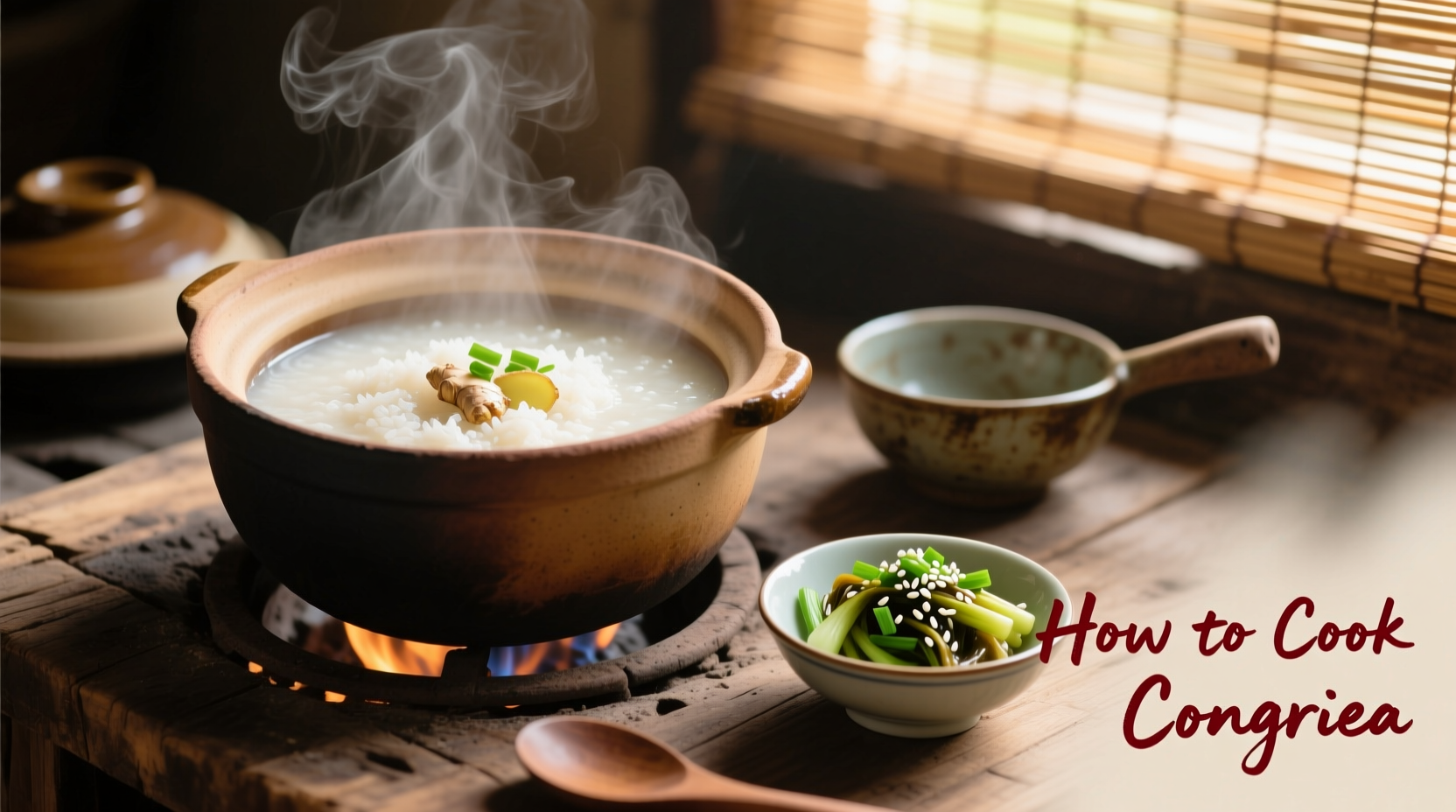Congee isn't just comfort food—it's culinary history in a bowl. This ancient rice porridge has nourished generations across Asia for over 2,000 years, evolving into distinct regional variations while maintaining its essential soothing character. As a Chinese culinary specialist with decades of experience, I've perfected a method that balances tradition with practicality for modern kitchens.
Why This Congee Method Works
Many home cooks struggle with congee because standard rice cooking ratios fail completely. Unlike regular rice preparation, congee requires patience and understanding of how starch transforms in liquid. The magic happens when rice grains fully break down, releasing starch that creates that signature velvety texture. This method eliminates guesswork by focusing on visual and textural indicators rather than strict timing.
Essential Ingredients Explained
The beauty of congee lies in its simplicity, but ingredient choices significantly impact results:
- Rice selection: Short-grain white rice (like japonica) provides optimal starch release. Jasmine rice works well for Southeast Asian variations. Avoid instant or parboiled rice.
- Liquid ratios: Start with 1:8 ratio (rice to water) for thick congee, 1:10 for medium, 1:12 for thin. Adjust during cooking as needed.
- Flavor foundation: A 2-inch ginger slice and 1 star anise added early creates subtle aromatic depth without overpowering.

Equipment Options for Every Kitchen
You don't need specialized equipment:
- Stovetop method: Heavy-bottomed pot prevents scorching (essential for even cooking)
- Rice cooker: Use 'porridge' setting if available; otherwise standard setting with extended time
- Slow cooker: Low setting for 6-8 hours creates remarkably smooth texture
Step-by-Step Cooking Process
Follow these critical stages for perfect congee every time:
Preparation Phase
- Rinse rice thoroughly until water runs clear (removes excess surface starch)
- Soak rice in clean water for 30 minutes (accelerates breakdown during cooking)
- Combine rice, liquid, and aromatics in cooking vessel
Cooking Timeline with Visual Cues
| Time | Visual Indicator | Action Required |
|---|---|---|
| 0-30 min | Rice floating, water clear | Stir occasionally to prevent sticking |
| 30-60 min | Water cloudy, grains swelling | Stir every 10-15 minutes |
| 60-90 min | Grains breaking down, thickening | Stir frequently, check consistency |
| 90-120 min | Creamy texture, no whole grains | Adjust liquid, season, finish cooking |
Critical technique: The "wooden spoon test" determines doneness—when the spoon stands upright in the congee without support, it's reached perfect consistency. This traditional method works better than timing because stove strengths and rice varieties differ.
Regional Variations Compared
Congee adapts beautifully to local preferences while maintaining its essential character:
| Regional Style | Key Characteristics | Best Rice Type |
|---|---|---|
| Cantonese | Thin consistency, subtle flavor, served with multiple side dishes | Japonica |
| Cantonese | Thin consistency, subtle flavor, served with multiple side dishes | Japonica |
| Teochew | Thicker texture, often includes fish or seafood | Glutinous rice blend |
| Vietnamese (cháo) | Medium thickness, frequently includes meat or herbs | Jasmine |
| Japanese (okayu) | Thick consistency, often served with umeboshi or salmon | Short-grain sushi rice |
Common Mistakes and How to Fix Them
Even experienced cooks encounter these issues:
- Problem: Congee too thin Solution: Simmer uncovered 10-15 minutes to reduce liquid, or blend small portion and mix back in
- Problem: Congee too thick Solution: Gradually add hot water or broth while stirring until desired consistency
- Problem: Burnt bottom layer Solution: Transfer top portion to clean pot, discard burnt layer, adjust heat lower next time
- Problem: Grainy texture Solution: Continue cooking with additional liquid; use immersion blender for quick fix
Serving and Storage Best Practices
Authentic congee experiences depend on proper finishing:
- Traditional accompaniments: Century egg, pickled vegetables, fried dough sticks (youtiao), minced pork
- Modern variations: Poached egg, shredded chicken, scallions, sesame oil drizzle
- Storage: Keep in airtight container for up to 4 days; texture thickens when refrigerated
- Reheating: Add liquid gradually while warming to restore creamy texture—never microwave dry
Congee's versatility makes it equally suitable for breakfast, recovery meals, or elegant dinner presentations. The key is understanding how small adjustments create dramatically different experiences while maintaining the dish's essential comforting nature.











 浙公网安备
33010002000092号
浙公网安备
33010002000092号 浙B2-20120091-4
浙B2-20120091-4